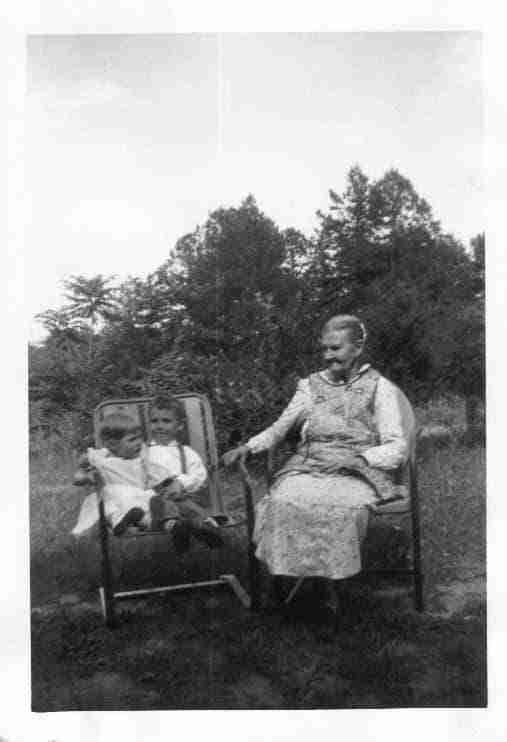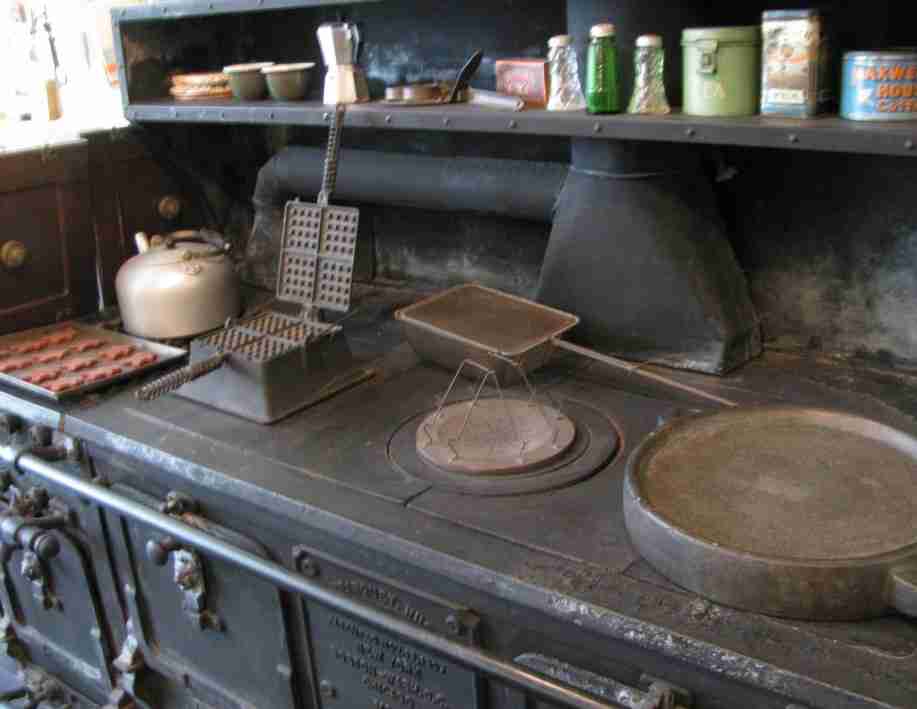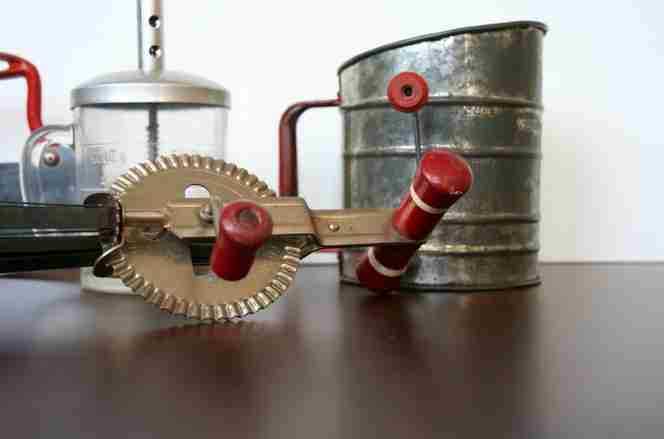Great Grandma’s Blue Ridge Kitchen ca 1907

I love cooking breakfast; I do so most mornings. It gives a productive start to my day and challenges me creatively. My palette demands variety, so I enjoy trying new variations of old favorites. But whatever I cook must be prepared quickly; I can’t spend all morning in the kitchen. So, I’m thankful every day for the amenities of my modern Blue Ridge kitchen: microwave, toasters, coffee machines, glass-top electric stove, refrigerator, and so on.
Great Grandma Jordan’s Kitchen: My 1950s Memory
When I was a kid in the 1950s, I spent some time at my great-grandmother Emma Jane Jordan’s house in North Carolina’s Blue Ridge Mountains. She was born in 1869 and died in 1963. She was the epitome of old-fashioned: until the day she died, she never had an indoor toilet. She swore she would never have one of those stinky things in her house.
Grandma Emma seemed to spend half of every day in the kitchen. She made almost everything from scratch. Staples like flour, cornmeal, sugar, and salt filled her cupboards, along with a lot of canned and dried food. For most dishes, she had to prepare (slice, dice, chop, sift) each ingredient before she could start on a recipe. In my kitchen, if it weren’t for prepackaged ingredients, mixes, and refrigerated ingredients, I’d be eating cereal every morning.
I fondly remember being in Grandma Jordan’s kitchen: the smells, the warmth, the conversation. In her memory, I’ll share some of her recollections of her kitchen when she was a young mother. In 1907, she was in the same house I visited in the 1950s.
The 1907 Kitchen Layout and Appliances
When you walked into her house from the front porch, you were in the kitchen: one big room with a table that would seat eight, surrounded by mix-and-match chairs. Off the kitchen was a sizeable and well-stocked pantry. Against an outside wall was the wood-burning stove, a cast iron beast that did double duty as the primary cooking appliance and a supplemental heater. The stove needed constant care, with wood added throughout the day to keep the heat just right. Cooking on it, whether baking bread or making a meal, was a balancing act of adjusting the flue and feeding the fire to maintain a suitable temperature.

An icebox would be added in later years, but there was no refrigerator until the 1950s. The Rural Electrification Act of 1936 brought electricity to the mountains. Still, many areas of Appalachia didn’t have electricity until after World War Two.
Tucked into a corner was a butter churn, a wooden cylinder with a hand-operated dasher. Butter from cream was made in small batches every few days because it wouldn’t keep. For morning coffee, there was a hand-turned grinder. Beans were coarsely ground and percolated in a stovetop percolator. By today’s standards, Emma’s coffee was brutal stuff.

Cookware and Utensils
The kitchen’s cookware was dominated by cast iron. Cast iron skillets and Dutch ovens were used for frying, baking, and stewing. These pieces were seasoned with lard or bacon grease to prevent rusting and ensure a non-stick surface.
Tinware and steelware were common. Flour sifters, hand graters, biscuit cutters, eggbeaters, potato mashers—the list goes on—filled drawers and shelves. Stoneware crocks lined the shelves for storing beans and fermenting vegetables. These heavy, glazed pots were ideal for keeping food fresh and mice and bugs at bay. Wooden rolling pins and a large dough bowl sat on a countertop.
Common Kitchen Tasks
Making Biscuits
Biscuit preparation was a daily ritual; they were served with every meal. Sometimes, they were the meal. I watched Grandma Em mix flour and soda, cut in butter, add buttermilk, and knead the dough until it held together well. Then she would roll out the dough and cut the biscuits with a tin cutter, and into the oven they went. I can still taste those flaky biscuits, eaten with a big chunk of fresh butter and a spoonful of apple butter. Heavenly.
Cooking a Meal
A typical meal might include beans, cornbread, and fresh vegetables. Beans were soaked overnight and simmered on the stovetop, flavored with a ham hock for added richness. Cornbread, a staple of mountain cuisine, was mixed with cornmeal, buttermilk, and eggs, and baked in a skillet. Fresh vegetables from the garden, such as green beans or collard greens, were washed, chopped, and cooked with a bit of pork fat for flavor. Each dish required time and patience as Emma Jane balanced the heat of the stove and the timing of each dish.
Daily Rhythms and Community
The kitchen was more than just a place to prepare food; it was the center of family life. The rhythm of the day was punctuated by the tasks performed in the kitchen, from the morning coffee grinding to the evening’s meal preparation.
Seasonal changes brought variations in kitchen activities. Summer meant preserving the garden’s bounty through canning and drying, while winter focused on hearty stews and baked goods that provided warmth and sustenance.
Personal Reflections
Great Grandma Emma Jane’s Blue Ridge Mountain kitchen was a testament to self-sufficiency and resourcefulness. She made do with what she had. The absence of modern conveniences like electricity meant that every job required more effort and ingenuity. Yet, there was a simplicity and satisfaction in the work, a connection to the land and the community that is often lost in today’s fast-paced world.
Comparing this to my modern kitchen, it’s clear that while technology makes my life easier, it has also distanced me from the hands-on experiences that once defined daily life. The skills and knowledge of that era are a valuable part of my heritage.
So tomorrow morning, when I reach for my pre-sliced mushrooms and pre-grated cheese to make an omelette, I’ll smile as I think of Grandma Jordan foraging for mushrooms, cleaning and slicing them, and hand-grating the cheese. That is, if omelettes were on her menu, which I doubt.


Comments are closed.